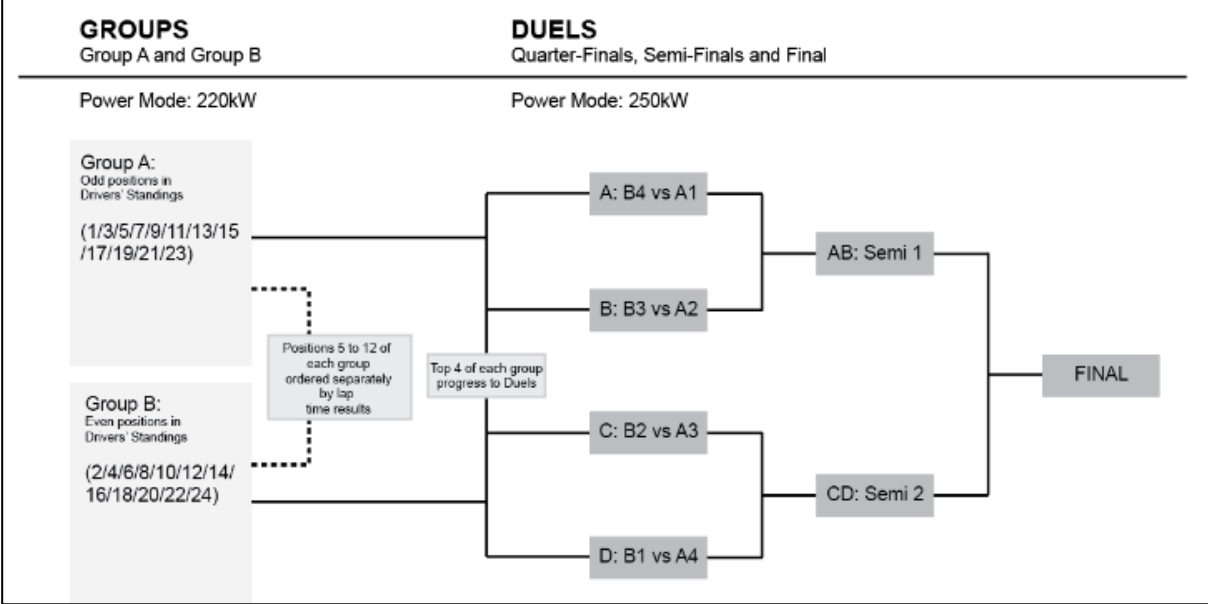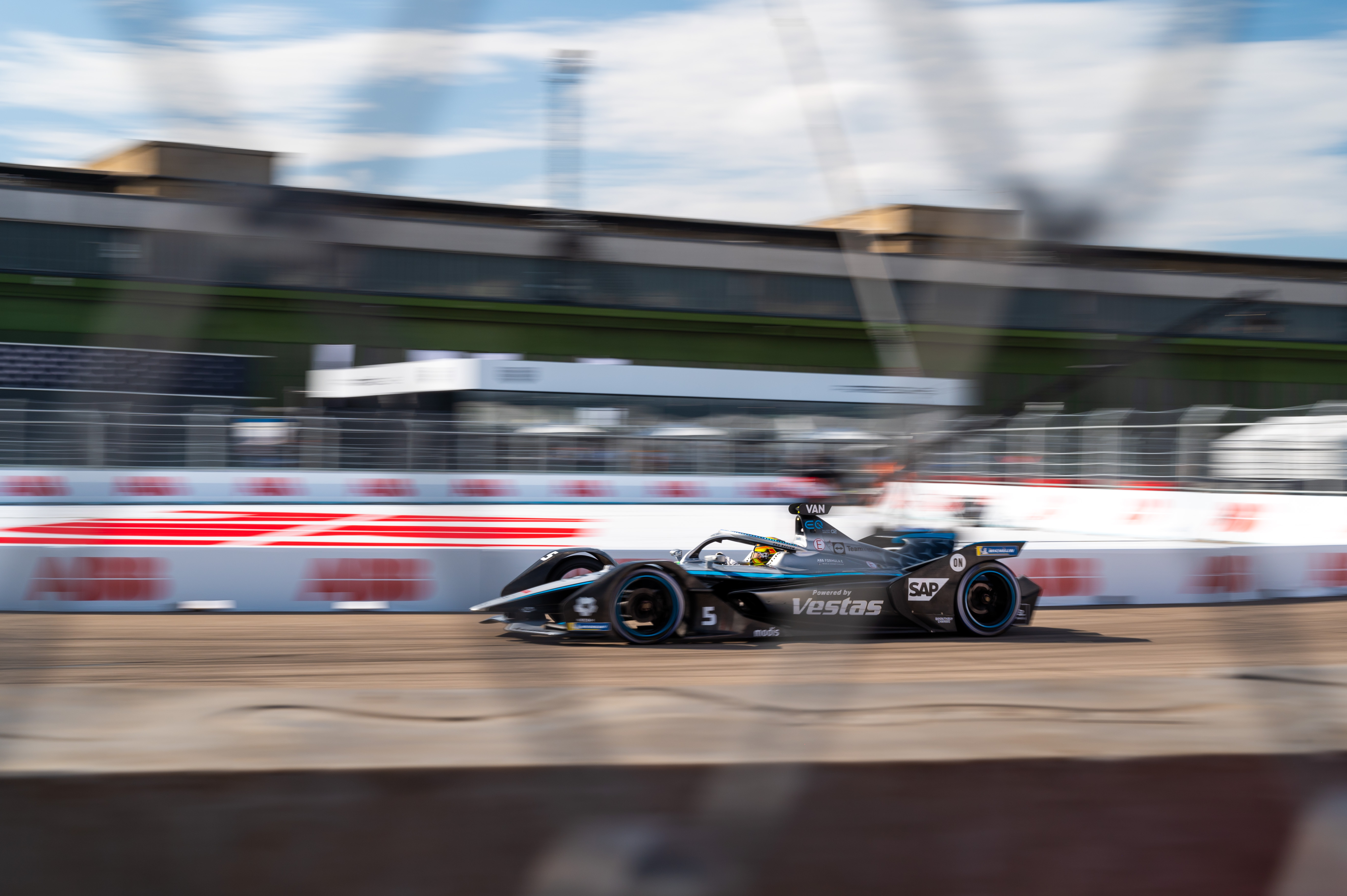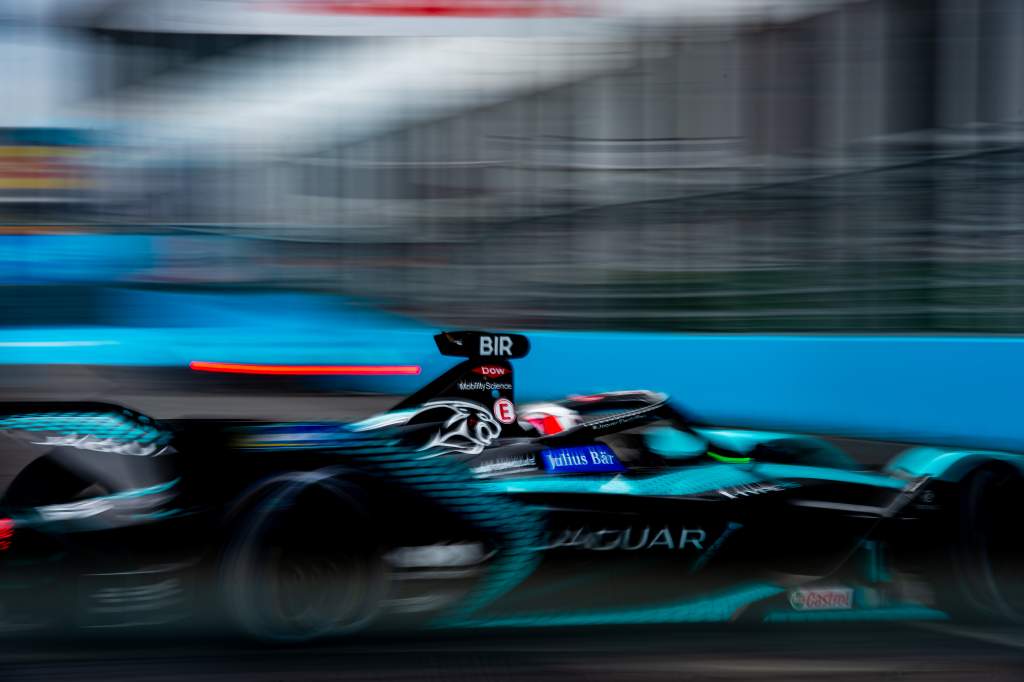Formula E ever-present Sam Bird significantly contributed to the new qualifying format in which a World Cup football style tournament system will be implemented.
The new format – first revealed by The Race last month – was ratified by the FIA World Motorsport Council today and has now been published in FE’s sporting regulations.
It will begin with two groups of 11 drivers in initial 10-minute sessions that will allow unlimited laps at a maximum of 220kW power. Each driver must set a minimum of “one timed lap within the first five minutes of his respective group”.

These groups will be then condensed down to eight drivers (the fastest four from each group) for quarter finals, followed by a semi-final, and lastly two-by-two duels to make up the E-Prix grid.
Positions five to 11 from each group will set the rear portion of the grid.
The so-called quarter-final duels will be defined based on the drivers’ classification in the group stages as follows: A: 4B vs 1A / B: 3B vs 2A / C: 3A vs 2B / D: 4A vs 1B.
The semi-final will be comprised of the winners of each quarter-final duel (A vs B and C vs D), running together on track to set their times with the slower driver from the quarter finals ahead on the circuit. The same format will be used for the final between the quickest pair from the semi-finals.
The maximum power for all the duels is set at 250kW.
The changes have come after the existing system of four groups of six drivers, based on championship positions, was heavily criticised for making the racing unfair in the context of track evolution during the all-important qualifying sessions.
Jaguar driver Bird told Formula E and FIA officials about his vision of a knockout style system last year, detailing a version that was then expanded upon and subsequently simulated by the FIA during the summer.
“It’s no secret that a lot of people have been a little bit unsure and unhappy with the qualifying format for a couple of years now and it needed kind of revamping,” Bird told The Race.
“A lot of us drivers were coming up with ideas, I had a certain idea that I wanted to put forward to Alejandro [Agag] that I thought would not only be maybe slightly fairer, but also greatly improve the show.
“So, I put my idea forward to Alejandro and Alberto [Longo]. They really liked it.
“And what we’ve come up with is like a hybrid solution of the idea that I originally pitched to them.
“I think it sounds great, what they’re going to go for, and I look forward to trialling it in pre-season testing.
“I think the fans will like it and it will come up with a grid that is less chaotic, and less random, which is a good thing.”
As per updated sporting regulations issued today, Group A will be comprised of the “drivers occupying the odd positions of the drivers’ championship standings and Group B comprised of drivers occupying the even positions”.
For the first race of the season in Diriyah, next January, the groups will be formed by teams having one competitor in each group. This will be at the discretion of the competitor.
The new qualifying format has been introduced to minimise significant track evolution penalties over a period which for the previous group system was at least 30-minutes with breaks between sessions.
Mercedes driver Stoffel Vandoorne described the changes as “very positive” and likely to make the title battle fairer.
“I expect the championship fight will ultimately be between fewer people, rather than ending up with half the field still in the fight for the drivers’ title like we saw in Berlin,” Vandoorne told The Race.
“Because of the nature of the cars, tracks, and how tight the field is, it will still be difficult to qualify on the front of the grid, and there will always be a level of unpredictability.
“But with a bit more consistency and a more recognisable set of drivers at the front throughout the season, it will hopefully create an even nicer narrative for the championship itself.
“Hopefully I will be one of the people in the fight for the championship next year of course, but I think more consistent frontrunners, based on pure performance is what the championship needs moving forward to become even more successful.”

Teams have already been working through the new systems on simulation tools to help simplify the new procedure.
Pitstops during the session will play a part in teams’ plans and The Race understands that these will have to take place in the pit garages rather than in the pitlane.
It is understood the FIA did not want a ‘double-stacking’ situation in the usually makeshift FE pitlanes for safety reasons.
The longer qualifying system will be offset by the first free practice session at races being reduced from 45 minutes to 30. This is to give flexibility to timetables and to balance the duty-cycles of the spec batteries.
In addition to the qualifying format changes, the FIA also confirmed that extra time will replace the energy reduction rule which has been used since the middle of the 2018/19 season.
Now in-race suspensions such as full course yellow and safety car periods will mean 45 seconds are added to the race time for every 60 seconds of the yellow.
This will only be up to the 40th minute of the 45-minute plus one lap race distance.
At the 40th min the FIA will give the extension time in a similar manner to that used in football for injury time.
No more than 10 minutes for the race extension in total can be added.
The 52kWh usable energy will remain unchanged. Additionally, “no partial minutes will be calculated” and according to the regulations if “an SC or FCY period extends into or occurs during or after minute 40 of the race, it will not be counted for the ‘extra time’ calculation”.
This has been implemented to ensure there is no repeat of the first Valencia race in April when most of the field failed to the finish competitively when an excessive amount of energy was deducted during a late safety car period.
Teams are set to continue be only allowed access to their garages on a Thursday before an event taking place on a Saturday.
Finally, the limitations on sensors for 2022 have been lifted. These include brake, gearbox barrel position and mainshaft speed sensors.







